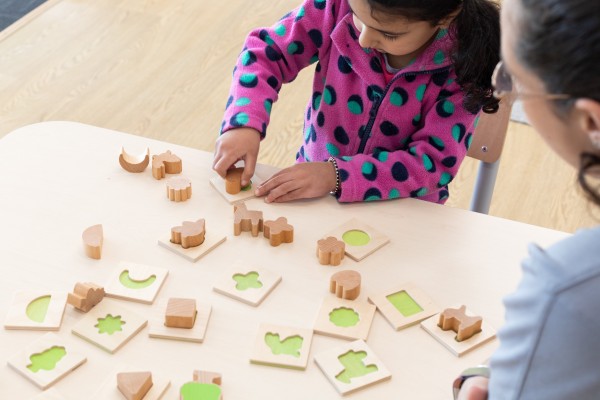Take note of urges during play
26 January 2021

Urges are patterns of behaviour - they can tell us a lot about the child's journey of discovery. Beth Terry tells us more.

An urge is a pattern of behaviour that children have in their play where the child has an urge to play in a certain way. At Treetops, we recognise these urges (also known as schemas) as being important to children, and we endeavour to observe and recognise these in children. Identifying urges in children can help teachers and parents gain a deeper understanding of individual children to allow us to foster their learning.
Furthermore, urges can help us to see more fully, the child as an investigator and constructor of meaning.
Through urges, children are testing out their thoughts and making connections in their brains. When urges are recognised, it can help teachers and parents understand that the child has an unfolding biological need to make sense of their world.
They do this by doing the same action, with different materials over and over again. Children innately know what they want to learn, and it is our job to observe it and delight in it. Sometimes these urges lead to behaviours that are hard to understand from an adult's perspective. Recognising them can help understand the child, allowing more freedom for play and providing an environment and resources to allow for these expressions.
It is important for children to develop dispositions to help them enjoy life to the fullest.
Dispositions include having courage, building trust, involvement, developing perseverance, having confidence and taking responsibility. Urges allow for these dispositions to blossom, as children are engaged with their hearts and minds as they concentrate on their urge. When children engage in urges, they are completely absorbed and are in a flow in their play. This deep enjoyment has high levels of engagement which impacts children’s wellbeing and sense of empowerment. To give an example; we may see the child's interest as playing with dolls, but as we observe, we see a pattern in the play with different objects and areas of play. We may notice that the child covers the dolls, and they like to hide themselves in boxes and paint their paper in one colour, covering the entire paper. This may show that the child has the urge of enveloping, which means that they like to cover objects and themselves.
So what are common urges that we can see in children’s play:
Transporting:
The urge to carry many things one time; using all parts of the body, buckets, bags, baskets and objects with wheels.

Trajectory:
The urge to throw, drop, climb up and jump off (the trajectory of one’s own body). As well as interacting with things that are already moving, such as swings, chimes and running water. It can be diagonal, vertical or horizontal.

Transforming:
This urge is an interest in objects changing shape, colour and consistency; such as baking, mixing water and dirt, ice melting to water.

Enclosing:
The urge to contain; filling up cups with water, building fences for the animals to go into, drawing around a painting, wearing bracelets and sitting inside boxes.

Enveloping:
The urge to cover both themselves and objects; covering themselves in a flannel when washing or covering their painting with one colour.

Rotation:
The urge to interact with anything that goes around; anything that is circular or has curved lines. This includes wheels, water wheels, watching the washing machine on spin cycle, egg beaters, and spinning around.

Orientation:
The urge to hang upside down; to get the view from under the table or on top of the box.

Positioning or ordering:
The urge to line objects up; like cars, sorting by size or colour, turning everything upside down. This also includes positioning people in space (under, over, beside).



Connecting:
The urge to join; puzzles, marble runs, train tracks, Lego (R), threading beads.

Disconnecting or deconstruction:
The urge to pull apart; cutting with the scissors, tearing paper, knocking down towers and sandcastles. This can be linked with connecting and then followed by disconnecting.

Posting:
The urge to post objects into or through things; cable reels, wine barrels, boxes, toilets.

Gathering or collecting:
The urge to gather together objects that are similar.

Grouping:
The urge to create groups of different types.

One way of supporting children in their innate urges is to provide resources which allow for freedom of play and expression. Loose parts is a way that we do this, through open-ended resources where children can play and imagine with them in many possible ways. Connecting in the outdoors and with natural resources allows nature-rich experiences where many of these urges are possible through the exploration of the environment.
Children are all individuals, and this is the same with urges of play. Some children clearly have one or two urges, and others have several. Some children have very strong urges and last for a long time, and some come one at a time for periods of time.
We recognise the depth of knowledge and insight parents and whānau have in identifying urges in their children. We invite you to talk to your child’s teacher about any urges that you see to help us understand your child more. These discussions can help both the teacher and parent as we see patterns in play and can help in coming up with ideas of resources to support learning and help to understand some challenges urges can bring.
We invite you to come on a journey with us as we learn more about urges and see the delight and learning that comes with seeing the world through the eyes of wonder.
Children can teach us so much. How to play, how to discover and how to be!